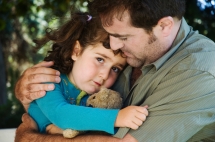It’s almost September — time for school, football, cross-country, marching band and soccer. There are lots of allergy traps for your child out there. Read on to find out what to look for — and what to do about it.
At school, three immediate threats come to mind. Number one is dust. Most classrooms sit empty over the summer, giving dust plenty of time to settle on tables, books, window frames, etc. Dust mites find a way of hiding inside of window coverings and light fixtures and lurking deep in hidden corners. When teachers return to those rooms to prepare for a new crop of students, dust may be among the last things they consider — if they have time to think about it at all. Once activity returns to the classroom, that dust gets stirred up and fills the air, wreaking havoc for allergy sufferers.
The second potential problem is food allergies. Depending on the severity of your child’s allergies, simply sitting next to someone eating a peanut butter sandwich could be cause for serious alarm. And peanuts aren’t the only risky allergen out there; for some food-allergic kids, a trip to the cafeteria could be like walking through a mine field. While it may be simple to avoid a specific allergen that appears on a plate in its whole form, that same trigger could be an unsuspected ingredient in another dish. Or a trace amount in the kitchen from a previous day’s meal could wind up in the food by accident. The safest course to avoid problems for allergic children is to pack their lunch at home with known ingredients.
And last but certainly not least, there’s good old pollen. It can affect your child at school both on and off the sports field. Grass and weeds are the serious troublemakers in late summer and fall. Football players, runners, marching band members, and soccer players will spend a lot of time rolling around on — and kicking up — grass and weeds. Their parents, you, will likely find yourself at parks and fields for hours where mown grass will take to the air with the slightest breeze. Even the kids who plays sports themselves are surrounded by the allergens floating in the air and drifting off their classmates’ clothing. Aside from the sniffling and wheezing that affects athletic and musical performance, allergy symptoms have a significant effect on attention and concentration in school, and, consequently, on grades. Unfortunately, while antihistamine use may curb the symptoms, side effects from the meds also tend to negatively impact performance.
So what to do about it all? The first step is to take showers and/or change clothes after spending a lot of time outdoors. For the here and now, it may be necessary to take allergy medications to get a handle on immediate symptoms. But equally important, prepare for the next phase of allergen invasion (for instance, winter mold and spring trees) and get way ahead of the curve for next fall by teaching your children’s bodies to stop overreacting to environmental allergens. Immunotherapy is the only fix, and it is all natural with no medication. It trains your child’s body to ignore the allergens that trigger their symptoms so the allergies go into remission for many, many back-to-school seasons.
.![]()
